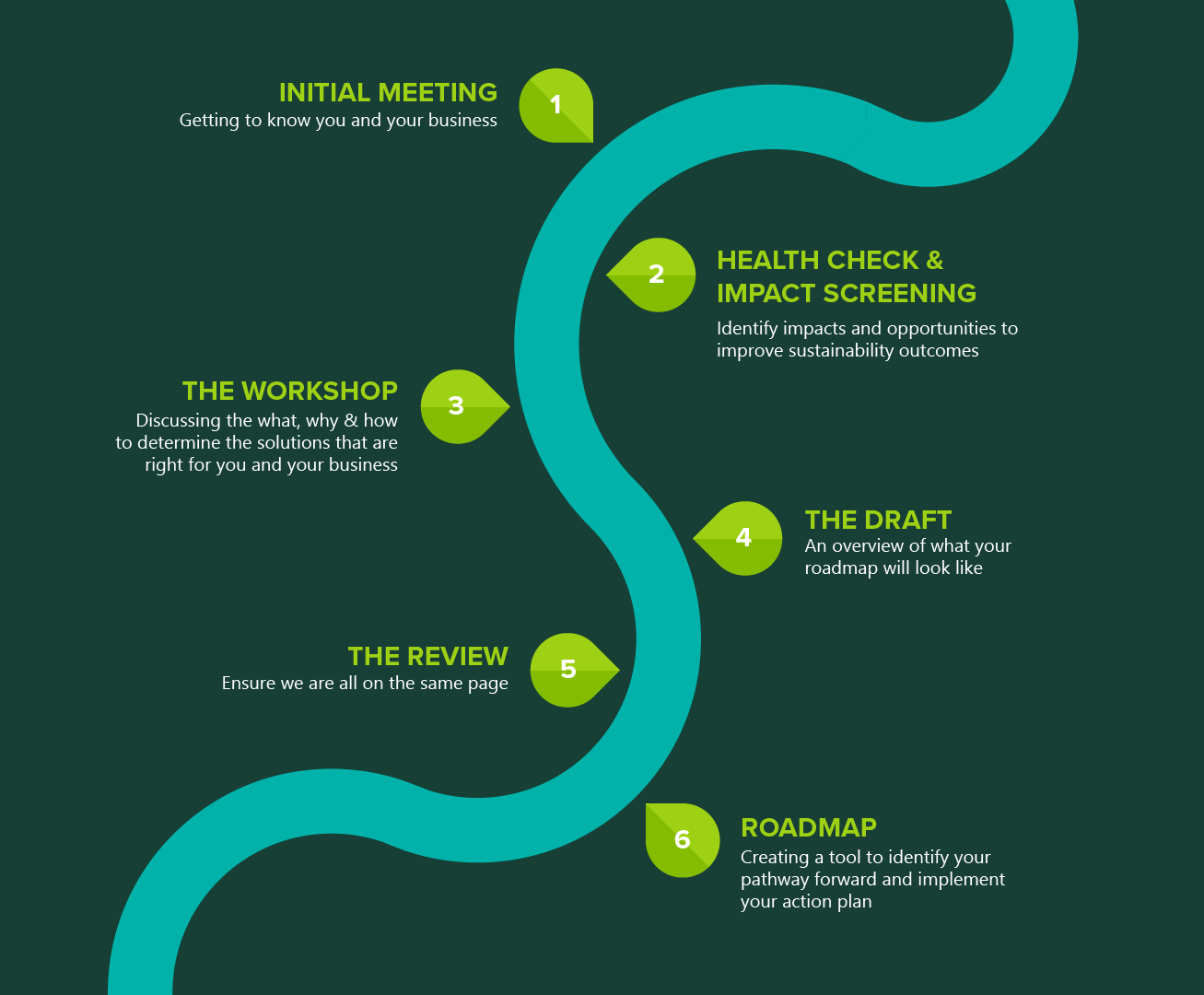Having a clear sustainability strategy isn’t just good practice – it is essential for building long-term resilience into your business operations. At Morphum, we take a holistic approach to supporting the development of a sustainability strategy, grounded in science and tailored to your sector, size and strategic objectives.
What is a Business Sustainability Strategy?
A sustainability strategy defines your organisation’s environmental, social, and governance (ESG) goals and outlines a roadmap to achieve them. This ensures that sustainable practices become embedded into your organisational culture and serves as a lens for decision-making.
At its core, a sustainability strategy helps your business:
- Understand its environmental and social impacts
- Set long-term sustainability goals
- Align with stakeholder expectations and market shifts
- Create a framework to implement positive and measurable change
Why Develop a Sustainability Strategy?
Businesses across New Zealand and Australia are seeing an increase in pressure from clients, investors, staff and regulators to demonstrate sustainability initiatives. A well-developed strategy helps your organisation to:
- Reduce environmental and social risks
- Improve resource efficiency and performance
- Meet industry standards and stakeholder expectation
- Identify opportunities for improvement
- Strengthen your brand reputation
Morphum’s Approach
Every business is different, and we tailor our process to your sector, structure and sustainability objectives. This includes:
- Understanding your organisation – taking time to understand your operations, priorities, risks and opportunities within an ESG context.
- Materiality and stakeholder engagement – identifying the issues that are most relevant and important to both your business and key stakeholders.
- Setting goals and benchmarks – setting clear and achievable sustainability goals, based on established benchmarks.
- Action planning – setting short, medium, and long-term actions that can both identify quick wins and future opportunities.
- Delivering a plan- a detailed roadmap to outline delivery and decision-making to ensure realistic outcomes.
Tailoring Your Strategy with the Right Tools
A range of tools and frameworks can help organisations streamline their strategy based on business activities and goals. At Morphum, we work with clients to identify tools that best support their implementation plan. These can include:
- B Corporation Certification – for businesses aiming to meet high standards of social and environmental performance and transparency.
- Environmental Management Systems (EMS) – such as ISO 14001 to manage environmental performance operational practices.
- Sustainability Reporting Frameworks – such as Global Reporting Initiative (GRI) standard or Sustainable Development Goals (SDG) alignment.
- Toitu Carbon Net Zero / Toitu Carbonreduce programmes – for organisations aiming to certify their emissions measurement and reduction journey.
- Live Cycle Assessment (LCA) – to better understand product impacts across their full lifecycle.
- Third-Party Product Certification – such as Environmental Product Declarations (EPDs) or ecolabels.
Getting Started
Start with a conversation. Morphum’s team can help you build a tailored strategy with lasting impact.
You can reach out to us here!
Ongoing Support
We provide support beyond strategy development, including:
- Internal team workshops
- Implementation support and project delivery
- Monitoring, evaluation and continuous improvement
.jpg)

.jpg)




.jpg)
.jpg)

